Update, March 2008: see A rescue for Bear Stearns, but the Fed is destroying the dollar for more on the crisis affecting Bear Stearns and its sale to JP Morgan Chase
This is not the idle chatter of permanent bears. The subprime mortgage collapse now hitting Bear Stearns may be just the start.
Serious analysts from big investment firms are talking ominously about 'the big one'. It will make you angry to learn just how the investment industry has got you involved.
MoneyWeek
Subscribe to MoneyWeek today and get your first six magazine issues absolutely FREE

Sign up to Money Morning
Don't miss the latest investment and personal finances news, market analysis, plus money-saving tips with our free twice-daily newsletter
Don't miss the latest investment and personal finances news, market analysis, plus money-saving tips with our free twice-daily newsletter
If you can understand what's happening, you should have time to move. So let's get to the bottom of it now, and in plain English.
From subprime mortgage to MBS
It all starts with the mortgage. About six million people in the United States who have no money have borrowed about 100% of the value of a house, right at the top of a housing market which has since fallen sharply. These are the subprime borrowers.
The lenders, however, did not have to worry very much about the risk of default, because they rolled these mortgages into bonds called Mortgage-Backed Securities, which they then sold. They got to be off-risk within a few weeks, because by then these re-packaged mortgages belonged to other financial organizations.
But it is not always easy to sell a package of these Mortgage-Backed Securities (known as MBS for short). Selling such a product demands that the credit quality is assessed; and because the underlying mortgages are subprime they are quite likely to go into default.
So a credit-ratings agency will only give the subprime MBS a low credit score, which means it is not considered investment grade. That disqualifies it from the portfolios of many professionally managed funds.
This is where it pays to get a bunch of smart investment bankers involved.
The investment bankers slice the MBS into several 'tranches'. These are known as Collateralized Debt Obligations, or CDOs for short. The idea is to create some higher risk assets and some much safer ones by slicing up the MBS into what are called equity (high risk), mezzanine (middle risk) and the much sought-after investment grade bonds (low risk).
Higher risk equals higher returns, of course, so the equity tranche of the MBS will earn the highest profits if things go well. But if things start to go wrong, the equity is lost first, and then the mezzanine. Even then, the investment-grade bonds could still get fully paid out. This persuades the credit ratings agencies to give the lowest-risk tranche a high enough credit rating to qualify for the critical investment grade rating.
In this way the investment bank has created a decent proportion of highly marketable bonds out of a package of low-quality mortgages. Fairly standard, for example, is to convert a large package of MBS into perhaps 80% investment-grade bonds, 10% mezzanine, and 10% equity.
How investment banks distribute the debt
The original mortgage lender is in a hurry to get the whole MBS sold off, because this raises cash which can then go to fund fresh mortgage loans to new subprime borrowers. The investment bank is well motivated to slice up the MBS, because selling investment products is what it does best. It won't want to keep much, if any, of the newly created CDO tranches, because investment banks earn their money primarily by deal-making and distribution, rather than by taking risks with borrowers.
In the market for CDOs, the investment bank will find it relatively easy to sell the investment grade bonds. They go mostly to respectable institutions. But the mezzanine and particularly the equity tranches can be trickier to dispose of. The effect of concentrating the risk, as well as the upside, in these tranches is to make them 'hot' so hot, in fact, that investment insiders sometimes call them 'toxic waste'.
How can these toxic bonds be sold off? There are several ways.
Method One: Create a hedge fund
The investment bank might choose to set up a hedge fund, possibly even using some of its own money to get the fund started. The hedge fund's objective is to trade in the high-risk equity and mezzanine CDO instruments.
Let's imagine that the investment bank puts up the first $10 million. The hedge fund then buys the equity tranche of the CDO from the investment bank. In effect, the investment bank is actually buying the equity from itself.
With a bit of luck and this is what happened over recent years the housing market then goes up. Now the CDO equity is floating higher in the water, because there's a cushion of higher house prices preventing those original subprime borrowers from defaulting. This rather obscure equity instrument, which is not traded on any open market, and so is not a liquid asset that can readily be bought and sold, should now be worth more than it was at issue.
It gets marked up in value, and it gets marked up much faster than the underlying house prices, because all the price volatility is concentrated in this thin slice of CDO equity. The hedge fund is now a real performer! And that means it will be rewarded by further investment from outside. So what started as a vehicle with a little investment bank cash can grow the funds it manages under its own steam.
Next, and this is what hedge funds are all about, it will leverage its risk, too. The hedge fund goes out to an unrelated lending bank, holding its high-performing but illiquid toxic waste in its hand, and it asks to borrow money using the waste as collateral. The lending bank has access to cheap money, and so it has the prospect of lending for spectacular profits.
Now the MBS wheel is fully in motion. With a little co-operation from the investment bank, to which it is closely related, the hedge fund loses no time in marking up the value of its equity CDOs, on the basis of rising house prices. There is an overwhelming pressure to do so, not least because the hedge fund managers are rewarded on performance. Alas, in the absence of a genuine open market, it is too easy to manipulate the CDO's price up to an unrealistic value.
The lending bank can see its collateral floating higher and higher in the water, and so it lends ever more cash against it to the hedge fund, and it picks up the new CDOs bought by the hedge fund as further collateral on new loans. Naturally, as with all collateral, the bank claims the right to sell the bonds if the underlying debt gets into trouble. But it doesn't look like a real danger at this stage.
So the money lent by the bank against the CDO equity goes back to the hedge fund, which buys more CDOs from the investment bank, which buys more MBS from the mortgage lender, which provides more money to subprime borrowers, who then buy more houses, pushing real-estate prices higher again.
This solution only gets into trouble when house prices turn sharply down. The lending banks ask for their money back, but the hedge funds haven't got it. All of it has been invested in CDO tranches. So the collateral needs to be sold. No problem, surely. It's on the books at a few billion dollars after all.
But with its concentration of risk in a falling market, the equity slice has been hemorrhaging value, without ever being bought or sold in an open exchange. It's incredibly painful for the investment banker to mark down a paper price in these circumstances. First, he doesn't actually know for sure that the price is falling any more than he knew it was rising when he marked the price up. But he does know that marking the price down will immediately be bad for him, his team, his bank, his customer and everyone else. He doesn't have to be totally evil to put off marking down the price until tomorrow or maybe the next day.
That's why the lending banks which later get hold of their collateral can be presented with a very nasty surprise when they finally try to redeem the situation with a sale. It simply won't fetch anything like the price it was last marked at.
Something like this is what happened to Bear Stearns' hedge funds. Its two funds were leveraged 5 times and 15 times respectively. That's the number of times they went round the financing wheel of leverage.
The smaller, more cautious fund had 5 times as much money invested in CDOs as it had received from its hedge fund investors in cash. This means that its balance sheet may have looked like this:
Assets Liabilities
$5bn CDOs
$4bn bank loans
$1bn hedge fund investment
Whereas the bigger fund was 15 times leveraged. So its balance sheet could have looked like this:
Assets Liabilities
$15bn CDOs
$14bn bank loans
$1bn hedge fund investment
So far, only the smaller hedge fund has been rescued and we await developments on the larger one.
The picture that is emerging is that the providers of the bank loans became increasingly nervous as US house prices turned down, and they wanted their money. Clearly, there were no cash assets in the hedge funds. So the banks took hold of the CDOs their collateral and went to sell them.
The first out of the door, rumored to be Merrill Lynch, mostly got the collateral it was owed, but it exhausted the CDO market of buyers. The rest found no bids and quickly stopped trying to sell for fear of advertising the rock-bottom prices of something which currently sits in many portfolios at funds all over the world.
Worse still, we are advised that the Bear Stearns funds were not actually invested in the toxic waste. They had bought the investment grade bonds. That clearly means the toxic waste and the mezzanine bonds have no value. We do not know who owns these.
Method Two: Dump the waste in landfill
'If it's not these failing hedge funds who own the toxic waste, then who does?' we asked another banker in a closely-related business.
A core competence of investment banks in this market is the ability to market the toxic waste, so it's one of their most sensitive commercial secrets. Our sources would only hint at where the mezzanine and equity CDOs are now sitting. We learned that at least some of it goes into tame, largely unsuspecting, and almost always 'institutional' portfolios the type of investment fund which looks after your money and lazily signs an indemnity to confirm to its brokers and banks its own professionalism and awareness of risk.
The same source smiles wryly when asked how these 'investment landfills' get their daily value for the un-marketable sludge. They phone their investment bankers, and dutifully record in their bond valuation package the numbers they receive back. They have no motivation to do better.
That means some fund managers out there are habitually reporting asset values which are a fiction, and we don't know who they are. It's worth understanding that they are giving us the chance to get out, provided we move fast.
Often the exit price of such a fund is based on the asset value, and they have not yet recorded the worthlessness of their CDOs. For the time being, therefore, this would create the opportunity to do a Merrill Lynch, and get out ahead of the crowd.
Method Two is frowned on, however, and rightly so. Arguments of 'moral hazard' demand that the investment bank should hold on to some, if not all, of the riskiest equity class.
Method Three: Synthetic CDOs
The third method on the face of it seems to resolve this question of moral hazard. It leaves the equity and mezzanine tranches with their creator (the investment bank) and thus exposes them to the possibility of being a victim of their own poor judgment.
But we'll see that it doesn't quite work that way. You didn't expect it would, did you?
To explain what happens, we need to delve deeper into the workings of the credit derivatives market. It's not hard to understand, provided we stick with plain English.
We need to get to grips with the 'synthetic' CDO; and for that we need to understand its building block, which is the Credit Default Swap (known as a CDS for short). Here's how it works.
The investment bank is now the owner of the hard-to-sell and risky mezzanine and equity tranches. Rather than dumping them into landfill, it decides to retain them, along with all the cash flows that they generate. But the investment banker managing these CDOs also decides to take out an insurance policy just in case the home loans go into default.
The investment bank pays an insurance premium to another investment institution for underwriting the risk of the underlying home-loans defaulting. Apart from a bit of legal drafting, that's all there is to a Credit Default Swap. In return for a cash payment, you swap the risk of default.
These insurance premiums, paid to the underwriter of the CDS, appear to the receiver as income just like bond interest payments. But unlike a standard bond, they are paid without the receiver having to part with any cash himself. It's income received without putting your money at the disposal of the person who pays you. You are being paid for accepting risk, not for lending money.
So you see, the investment bankers have been very clever. They have said there are two components in a bond-interest payment: a fee for the use of your money, and a fee for the risk of default. The CDS simply separates out the element for the risk of default.
The investment bank can have still more fun with this. Because what the underwriting institution would see is just a stream of income payments. And just like the boring mortgage streams that we started with, these CDS streams can be aggregated into a pool...then divided into tranches with different risk profiles...producing the magic of higher credit ratings for lower-risk tranches...plus concentrated risk in new toxic waste.
If you can get a credit rating agency to assess these new tranches you have created, then you have something which looks like a CDO and smells like a CDO but which is not now based on cash flows deriving from borrowed money. Instead it is based on cash flows deriving exclusively from insurance premiums that are paid to cover the risk of mortgage default.
That's how CDSs get packaged into what is known as a 'synthetic CDO', and the investment bank can sell them for what appear to be fantastic yields. Here is their pitch to investment funds that might be prospective buyers:
'You used to have to give me all your money to buy a boring old cash flow CDO, and then you were both lending your money and accepting the potential risk of the borrower defaulting. What I have for you today is the ability to accept only the better half of that deal.
'This new instrument means you can keep your money where it is, earning great returns in the stock market or wherever you're currently chasing performance, yet you will still receive income in return for underwriting the risk on a package of credit default swaps in the mortgage-backed security market.
'Look, I've got a great credit rating on this thing, and because we have eliminated the cash-borrowing aspect of the deal, I can sell you $1 million of synthetic CDO income for just $200,000.
'You get no extra risk above what you'd ordinarily accept, and a huge yield on your investment. You want in?'
It's a really neat deal. The investment bank is selling what the institution was already buying before a steady income, in return for underwriting the total loss if there's a default. But now the risk of default is dissociated from interest cash-flow. The buyer doesn't need to give anyone the underlying cash lent. He can earn part of the income those assets pay simply by promising to stump up if there's a default.
Meanwhile, the investment bank is now holding onto the original CDO toxic waste. So to the untutored eye it looks thoroughly responsible. But we now know better. The important part of what it was supposed to hold onto the risk of default has now been parked in the broader financial markets.
Remember Lloyds of London?
The yield meanwhile looks irresistible. Of course it does! The synthetic CDO packaging has allowed the investment bank to sell something which previously it would have had to buy.
It is selling to the highest bidder the right to receive its mortgage default insurance premiums so the buyer is just another 'investment landfill'. He ends up with what's called a 'contingent liability', a prospective claim on other valuable assets in his investment portfolio.
Why would any investment fund possibly fall for this scheme? The modern fund manager has a powerful short-term incentive to get a strong performance out of your invested savings. If he gets 2% more than the next guy he is a genius, and he will get more money under his management, more fees, and bigger bonuses.
But do you remember Lloyds of London? It used to be the world's biggest insurance underwriter. The way it worked was that rich individuals were allowed to keep all their money invested in their favourite stocks and shares, but they could also earn a second income from those assets by pledging that same wealth to underwrite commercial insurance risks which were sliced and diced by syndicates on behalf of their members.
Many Lloyds members lost absolutely everything houses, furniture and indeed their life when a series of vicious insurance losses hit the world's insurance market through the early 90s. Acquiring synthetic CDOs is the modern professional money manager's equivalent of being a Lloyds member.
So you can see now how through the use of synthetic CDOs, fund managers can underwrite credit default risk and increase their income accordingly, without outlaying any fund capital. But they are placing their fund capital at risk. Your fund manager is a genius while there are no claims. But if it goes wrong, your fund gets hammered. These styles of risk expose whole portfolios, so a loss to a subprime synthetic CDO could cost a fund its entire holding of US Treasury Bills.
Out of bonds & into the ether
Now, just in case you thought the CDS and its packaging, the synthetic CDO, were as ethereal as a financial product could get, let's fill in a few details and take a few more steps along the road of infinite credit expansion.
It was not long before the investment banking industry had a 'eureka' moment. They realised that actually holding the toxic waste was unnecessary. By offering CDSs and synthetic CDOs based on the worst possible companies they could make fantastic profits. In effect they could short-sell the bonds of the world's flakiest borrowers.
With it? These bright sparks started insuring against the default on CDS which they didn't even own! It's like noticing your friend is looking a bit ragged and taking out insurance on his life for your benefit, without him having anything to do with it. When Delphi Corp, a large motor parts spin-off from General Motors, got into serious trouble last year, its bonds fell into default. Incredibly, more than 10 times the nominal value of its bonds were then claimed from investment institution underwriters, by bankers who had insured against the default of bonds they didn't own by issuing Delphi CDSs.
This shows the perverse logic of the markets, which here dictate that the synthetic CDOs which will be found in the greatest numbers are the ones least deserving of the credit rating they've been given. And as long as there is demand for easy income there's no limit to how many of them may have been created.
Synthetic CDO market growth
The synthetic CDO market has shown truly remarkable growth in recent years. Probably the most respected issuer of statistics in international finance is the Bank for International Settlements. On this link https://www.bis.org/publ/qtrpdf/r_qt0506.pdf it says that 'credit-related derivatives rose by 568% in the three years ending June 2004.' That growth was nearly 5 times as rapid as the overall growth in over-the-counter derivatives. By now you should be getting some idea of why this incredible growth rate occurred. During 2001-2004 interest rates around the globe were deeply depressed as the world's central bankers tried to reflate after the Dot Com bust and 9/11. Fund managers were desperate for yield and the slump in equities had destroyed stock-market portfolios everywhere.
Governments began trying to enforce investment prudence. One of the things they did was require retirement funds to make a better attempt to match their long-term liabilities to their assets. Equities had suddenly and spectacularly failed to do this. So legislation was introduced which forced funds to buy investment grade bonds. Offering a regular income with a very low risk of default, investment-grade bonds looked to be the perfect vehicle for institutions that must make regular payments to the world's pensioners.
It would have been thoroughly wrong of the investment banking industry not to do its utmost to find a source of top-grade bonds to satisfy this demand. Equally, it would have been nave of them to allow their competitors to have the CDS and CDO market space all to themselves, unchallenged.
So in essence, it was government interference in the market which helped trigger the nascent CDS/CDO boom. Banks were soon queuing up to create investment grade instruments, and the income starved fund managers were gobbling them up. They had to because we, the public, don't buy underperforming funds.
Want proof of what has been going on? One of the mysteries of recent years (to us anyway) has been the progressive narrowing of credit spreads. Basically what has happened is this.
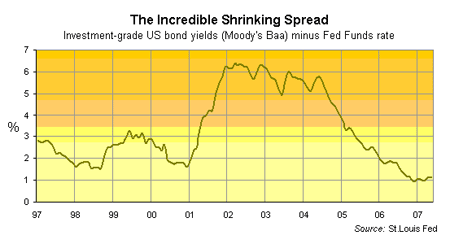
Four years ago, dodgy bond issuers would have to offer a much higher yield than US Treasury Bills to get people to buy their debt issues. On average, since 1970, Fairly Flaky Debts Inc. with a credit rating of BAA investment-grade would need to pay almost exactly 3% more than T-Bills each year to its bond holders.
This difference is known as the 'credit spread', and that extra income of 3% covered the fact that once every thirty-five years or so, companies like Fairly Flaky would fail and cost the bondholders 100% of their money; that's your money if the bondholder happened to be your fund manager. Yet by November 2006 bonds issued by Fairly Flaky Debts Inc. were yielding less than 1% above US Treasury bills. The risk premium had disappeared.
Why? The reason is that it had become easy to distribute default risk to income-hungry institutions. Investment banks had a risk-free bet, known as a credit arbitrage. They could borrow cheap money from Japan (that's another story, but there's plenty of cheap money about outside Tokyo too) and buy Fairly Flaky's bonds. They would then issue new CDS to income-hungry funds to offload the risk of default.
The statistical basis of credit ratings
After checking the credit rating the income hungry fund would accept a rock-bottom premium of about 1%, so the bank would be silly not to keep buying Fairly Flaky bonds yielding 3% above T-Bills until the yield dropped to T-Bills plus 1%. It works as long as they can dump the credit risk into landfills by selling more CDSs. That's why the Credit Spread, otherwise known as the risk premium, has now shrunk to a third of its long-run value.
The credit ratings agencies were obeying their standard model of evaluating risk on the basis of recent historic rates of default. That skewed the results, because of course there were almost no defaults in the previous 20 years. Nobody leaves their debt unpaid when the securing asset has risen in price much faster than the value of the debt.
That meant that the rating would be unlikely to fully factor in the risks of a housing price correction such as the one we have seen recently in the US.
Who is going to fail next?
We have hit upon a very rough and questionable method of identifying the next big failure in the CDO/CDS market. It may be coincidence, but if we had used this method a few months ago, it would have shown us to look first at Bear Stearns.
Why? Our sources indicate that Bear Stearns only has problems with those CDOs issued in respect of Mortgage Backed Securities created in 2005 and 2006. This is logical. Those CDOs were issued nearest to the peak of the US housing market, so they have the least float. Older CDO issues should have more headroom before defaults become a problem.
This would suggest that it is those firms who were late to the CDO party who should be in the deepest water. The following data was published by Standard and Poors in a 2005 report entitled 'CDO Spotlight: Update To Sizing Collateral Manager Participation In The US Cash Flow CDO Market.'
This table shows the ranking by size of liabilities of CDO managers at the end of 2004 and in the autumn of 2005. Bear Stearns jumped from nowhere to 13th place. It was late to the party, in other words. But it got busy very fast.
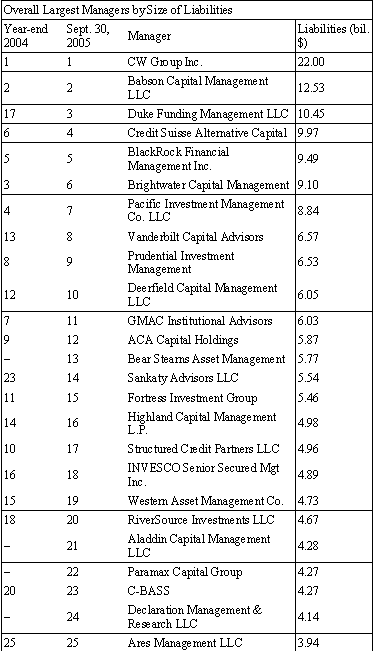
We do not pretend to understand these statistics fully, and we strongly advise anyone to look at the original report. What is of interest is that the data seem to illustrate how Bear Stearns aggressively sought market share starting in 2005, which could be why it found itself one of the first to be in some trouble.
If that is true, then the data might point to some other coming failures. It would be a remarkably prescient analysis by Standard and Poors if that were to be the case. But of course it might be complete coincidence, too. Maybe Bear Stearns has better risk management, and so it is first to see where things are going wrong. Maybe other providers adopted different measures to protect their exposed funds. Who can tell?
By the way the data only concerns cash-flow CDOs. The synthetic part of the CDO market is not included. The synthetic market is bigger.
Comparison with LTCM
Long Term Capital Management failed in 1998. It was the last truly serious financial collapse which threatened the financial system. When LTCM went under, the bail-out fund required was $3.65 billion. The fund itself was leveraged to about $125 billion of assets using a similar style of wheel financing to the one described above for Bear Stearns' hedge funds.
There was also the presence of off-balance sheet devices called interest rate swaps not so different in principle from the CDS described above.
Last week's rescue package announced for Bear Stearns smaller fund has been announced at $3.2 billion. We are awaiting the figures for the larger and more serious case. We believe the overall liabilities of both funds are in the $20-$25 billion range.
Back in 1998 LTCM was ploughing a lonely furrow. Its investment view was something to do with Russian bonds and the Japanese Yen. It was off the main investment spectrum, and there were few copy-cats putting the same market view into action in the same way.
That is where things are very different this time. The data produced by Standard and Poors above show just how conventional a strategy Bear Stearns has been following all of it trailing the worldwide boom in housing markets. Many banks and funds are involved. Perhaps they are not quite so exposed as Bear Stearns, but it is only a matter of degree. This makes the size of the problem potentially much larger, and of much greater risk to the whole financial system.
How large? Well, the equity lost can be very roughly estimated from first principles. There are about 6,000,000 subprime mortgages in the USA. They typically result from re-financing deals topping up to utilise whatever equity has accumulated in a house usually to pay off credit card debt; so they stay near 100% outstanding. The average house price in the USA is about $190,000, but we can reduce that to $150,000 on the assumption that we're at the lower end of the market. That gives us a principal sum of $900,000,000,000, which is 7 times the size of the LTCM exposure.
But the more serious figure the housing equity lost to falling prices is currently estimated at approaching 8% which is $72 billion. That doesn't include an adjustment for synthetic CDOs created by investment bankers to short the weakest MBSs, which is what they did with Delphi Corp.
Now you can see the difference in scale between LTCM and the subprime bust. This may be 20 times worse than LTCM. And it's getting worse daily.
Conclusion: Beware toxic waste
At a time like this, we should not underestimate the skill of people like Ben Bernanke at the US Federal Reserve in underpinning the financial system. They have been remarkably effective at organising the lifeboats over many years and many crises. On the other hand the Bear Stearns episode could be the beginning of wider systemic difficulties.
Here at BullionVault we think the Bernankes of this world will one day fail. The result will be a credit squeeze. Bond issues will be pulled, bank loans recalled, and business activity will sharply decline for lack of funding. The first two of these have certainly started with a rash of failed issues at the end of June. Will these risks be contained? We don't know.
We don't seriously expect that by some fluke we will identify the tipping point as it happens; that would be too lucky. Yet we feel compelled to share our views on the current situation with you. Clearly we're biased against excessive leverage, and against too much financial ingenuity, too.
That's why we're in the physical gold bullion business. We believe that real physical gold is a sensible insurance against today's increasingly weird financial system. It has been astonishingly reliable in that role in the past.
But this time, who knows?
By Paul Tustain for www.BullionVault.com
Get the latest financial news, insights and expert analysis from our award-winning MoneyWeek team, to help you understand what really matters when it comes to your finances.
MoneyWeek is written by a team of experienced and award-winning journalists, plus expert columnists. As well as daily digital news and features, MoneyWeek also publishes a weekly magazine, covering investing and personal finance. From share tips, pensions, gold to practical investment tips - we provide a round-up to help you make money and keep it.
-
 ‘Why I have ditched my Help to Buy ISA for cash savings and the stock market’
‘Why I have ditched my Help to Buy ISA for cash savings and the stock market’Without the 25% bonus, my Help to Buy ISA is effectively redundant, says MoneyWeek writer Sam Walker.
-
 Is your inheritance tax allowance cut if you sell to downsize or sell your home to pay for care?
Is your inheritance tax allowance cut if you sell to downsize or sell your home to pay for care?Downsizing relief is a little-known benefit that could save your loved ones tens of thousands of pounds in inheritance tax after you’ve died.
-
 'Governments are launching an assault on the independence of central banks'
'Governments are launching an assault on the independence of central banks'Opinion Say goodbye to the era of central bank orthodoxy and hello to the new era of central bank dependency, says Jeremy McKeown
-
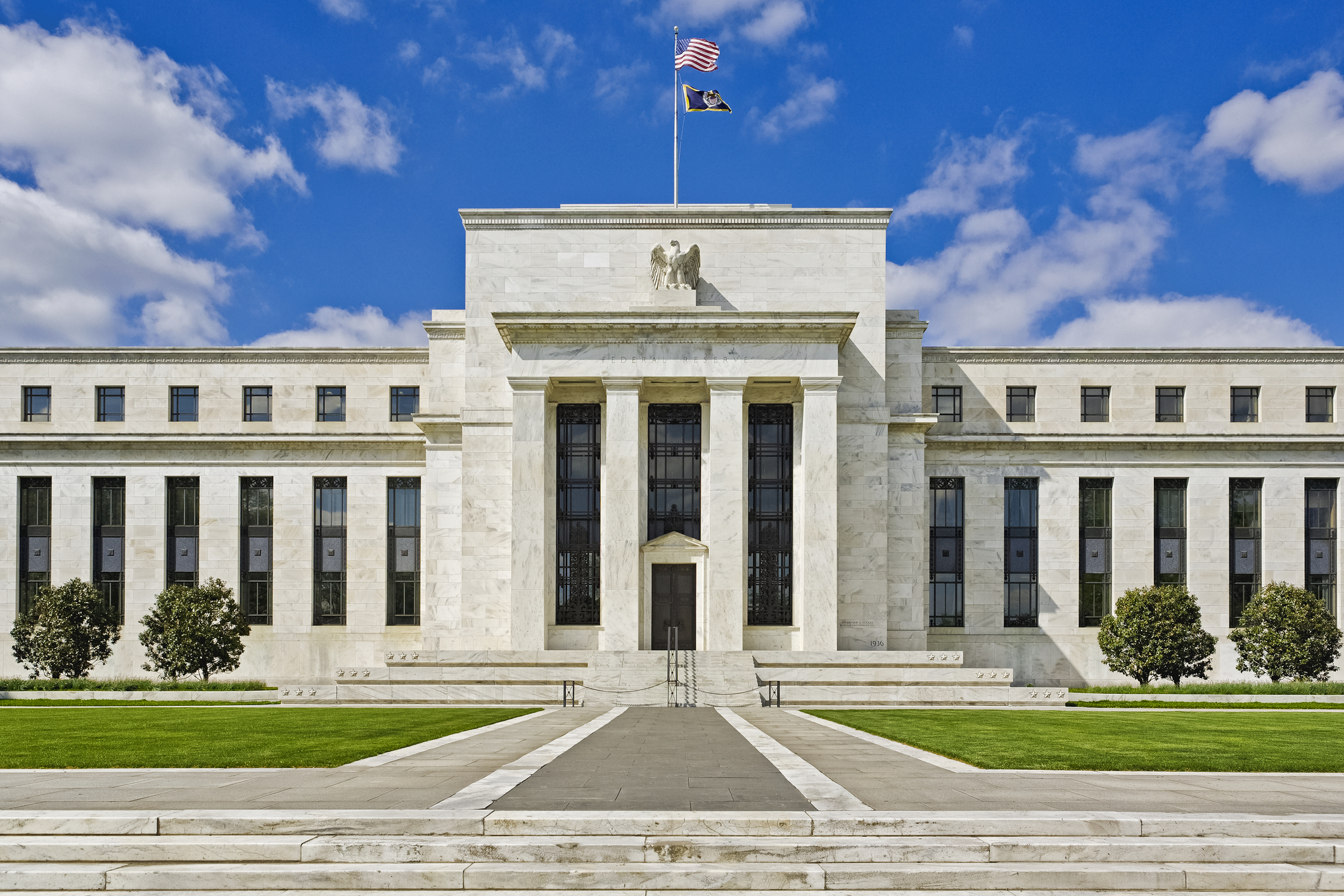 Do we need central banks, or is it time to privatise money?
Do we need central banks, or is it time to privatise money?Analysis Free banking is one alternative to central banks, but would switching to a radical new system be worth the risk?
-
 Will turmoil in the Middle East trigger inflation?
Will turmoil in the Middle East trigger inflation?The risk of an escalating Middle East crisis continues to rise. Markets appear to be dismissing the prospect. Here's how investors can protect themselves.
-
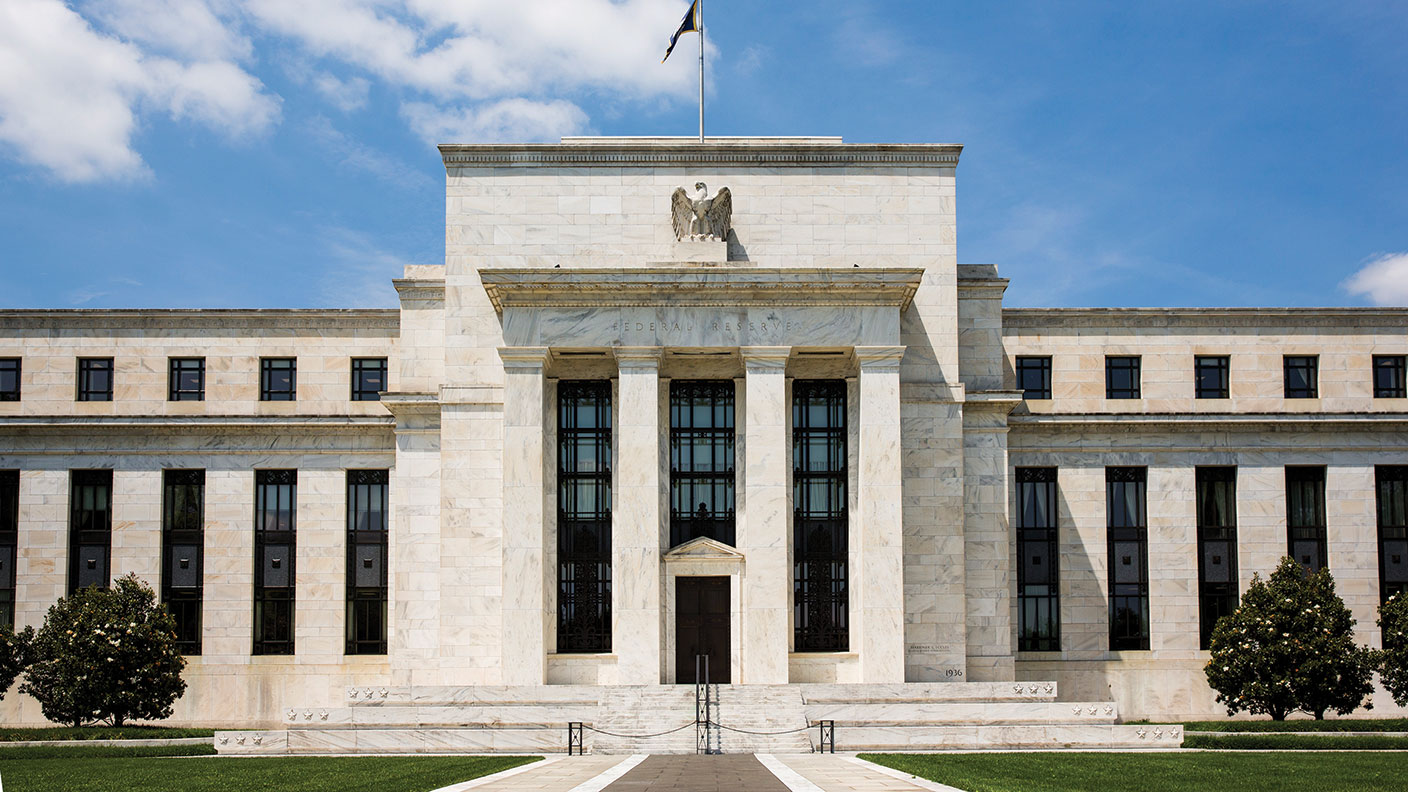 Federal Reserve cuts US interest rates for the first time in more than four years
Federal Reserve cuts US interest rates for the first time in more than four yearsPolicymakers at the US central bank also suggested rates would be cut further before the year is out
-
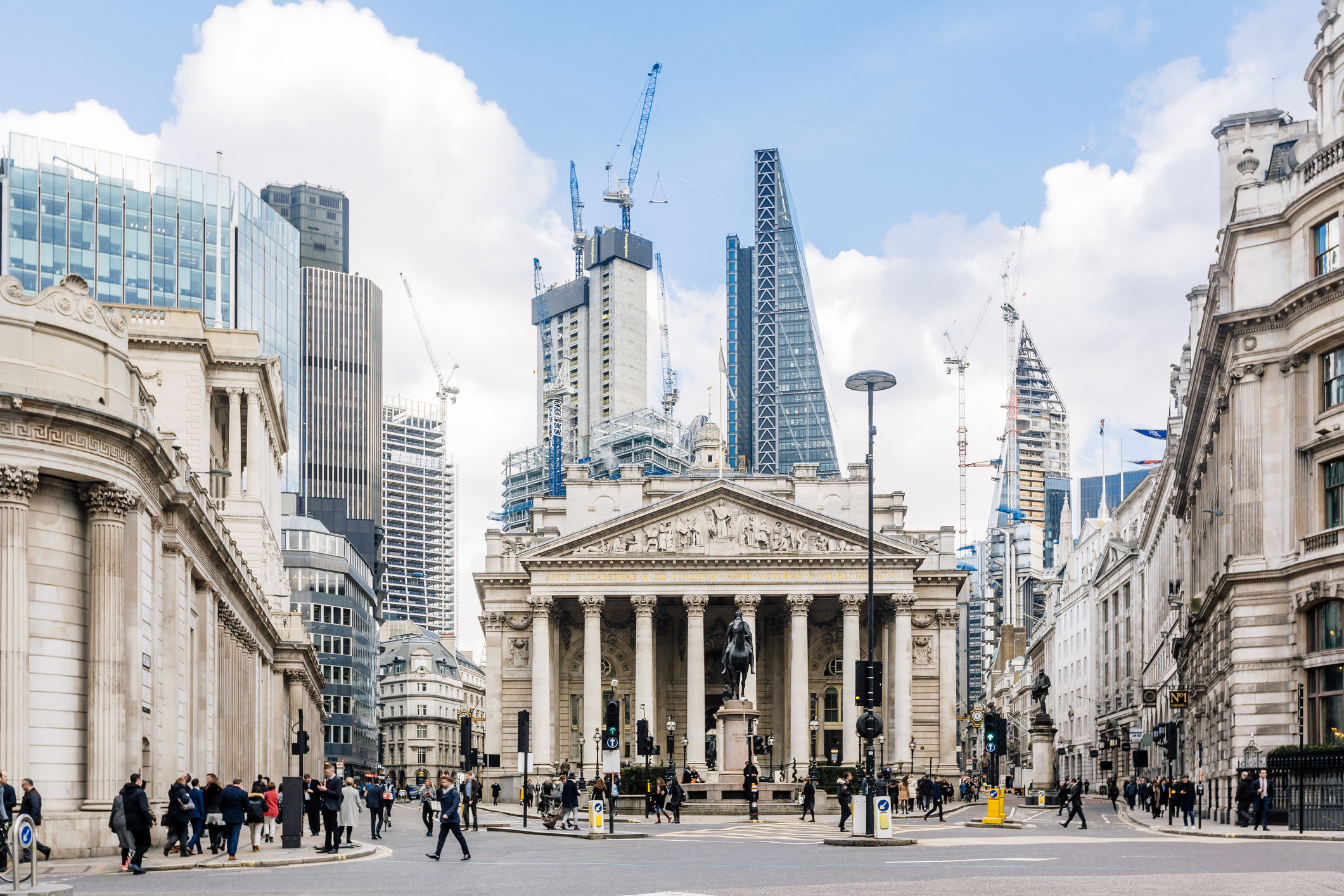 The Bank of England can’t afford to hike interest rates again
The Bank of England can’t afford to hike interest rates againWith inflation falling, the cost of borrowing rising and the economy heading into an election year, the Bank of England can’t afford to increase interest rates again.
-
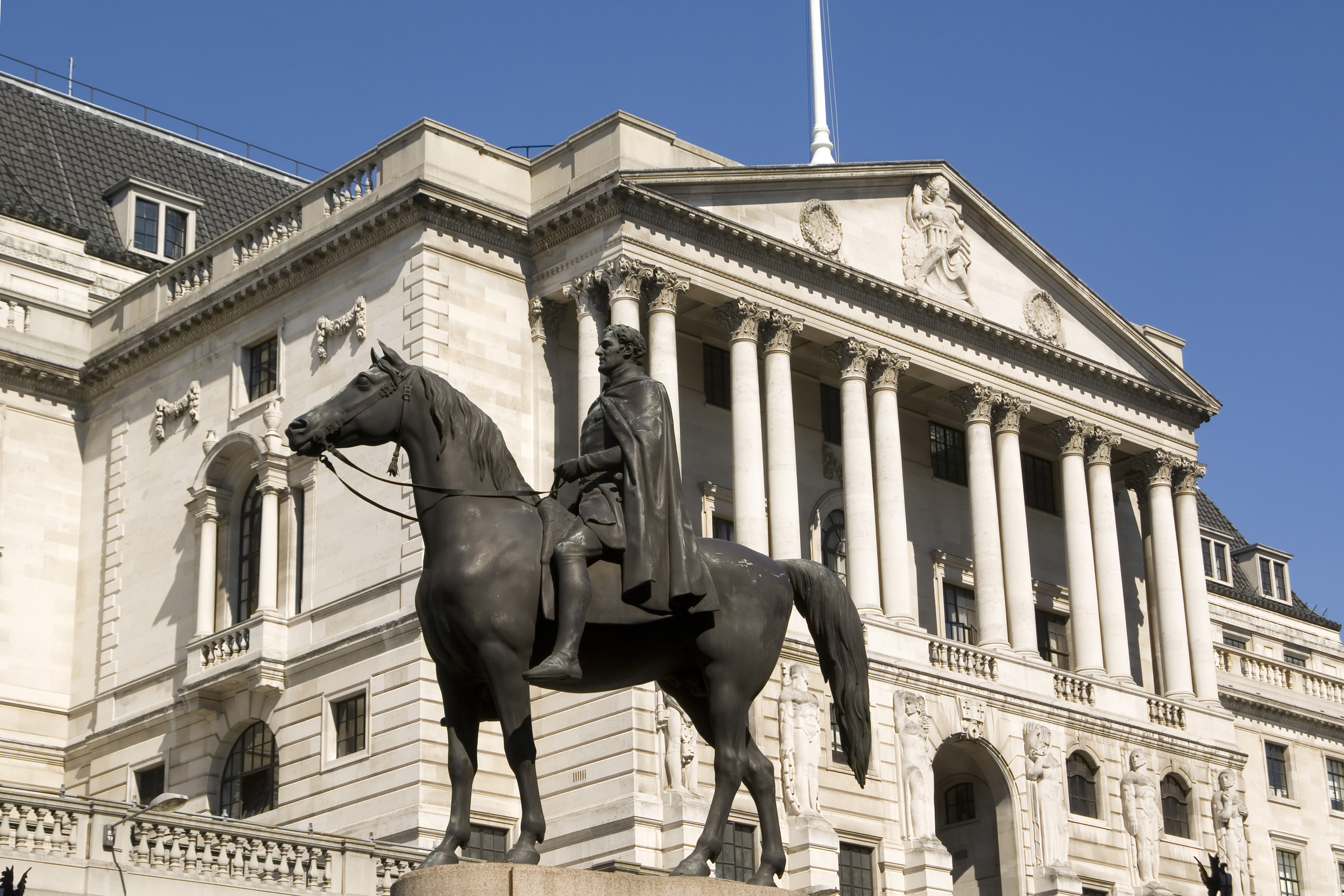 Interest rates held at 5.25% again
Interest rates held at 5.25% againThe Bank of England has kept rates at 5.25% again, in a widely anticipated move. We look at what it means for your money - and what the Bank’s next move could be
-
 US inflation rises to 3.7% as energy prices surge - will the Fed hike rates?
US inflation rises to 3.7% as energy prices surge - will the Fed hike rates?US consumer price index rose in August but markets do not expect a rate hike this month
-
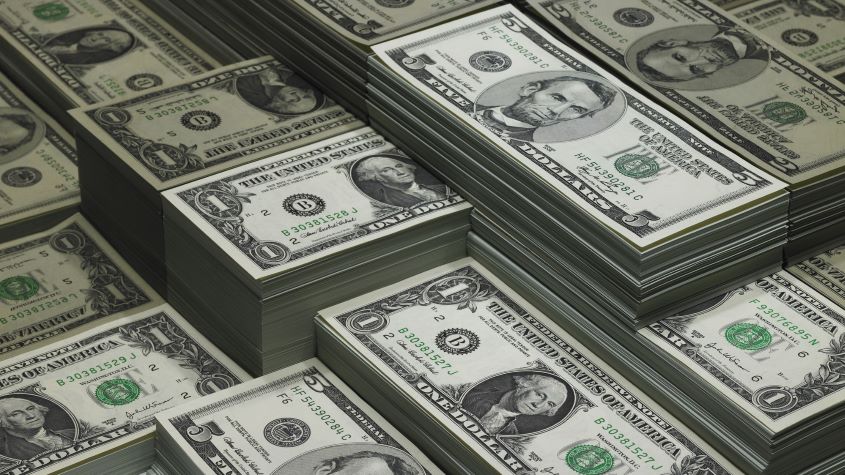 The debt ceiling illustrates America’s empire of debt
The debt ceiling illustrates America’s empire of debtOpinion The US has never quite got the hang of the conquering business as the debt ceiling debate shows.

